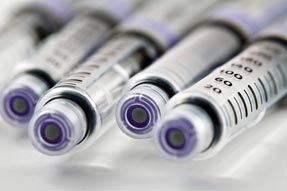Learn whether you are in a payment model that measures up
Physicians want to know how to tell if their practices might qualify as an Advanced Alternate Payment Model, which will garner extra reimbursement for quality patient care, and whether they might meet the standards of a qualified professional under the Medicare Access and CHIP Reauthorization Act.
Physicians want to know how to tell if their practices, or the entity to which they belong, will qualify as an Advanced Alternate Payment Model (APM), which will garner extra reimbursement for quality patient care, and whether they might meet the standards of a qualified professional (QP) under the Medicare Access and CHIP Reauthorization Act (MACRA).
APMs are a new approach outlined in MACRA that will reimburse physicians for quality and value that they provide in clinical care for Medicare patients. APMs include the Center for Medicare & Medicaid Innovation (CMMI, or the Innovation Center) models, the Medicare Shared Savings Program (MSSP), demonstrations under the Health Quality Demonstration Program, and other demonstrations initiated by federal law (some of which have yet to be defined).
To qualify as a Qualified Professional (QP) in an Advanced APM, there is a formula that looks at number of payments (25% Part B in Year 1) or patients (20% Part B in Year 1) who come from the entity. (The attribution is calculated at the Advanced APM level, not the individual clinician level.) In the beginning, most physicians will fall under the Merit-Based Incentive Program (MIPS). To be considered an Advanced APM, according to MACRA an entity must:
- base payment on quality measures comparable to those in MIPS,
- require use of certified electronic health record technology, and
- either bear more than nominal financial risk for monetary losses or be a Medical Home Model expanded under the authority of the Center for Medicare & Medicaid Innovation.
In other words, Advanced APMs accept risk based on the quality and effectiveness of care provided by their members.
If you don't know whether your particular accountable care organization (ACO) or MSSP qualifies as an Advanced APM (at least as included in the proposed rule), you can check to see if you are a member of any of the following entities that qualify:
- MSSP Tracks 2 and 3 (where there are shared savings and losses). Go online to understand the differences in the tracks.
- Next Generation ACOs .
- Comprehensive ESRD (End-Stage Renal Disease) programs are here .
- Comprehensive Primary Care Plus regions that have been identified are here .
- Oncology Care Model (although these are not active yet, information will be listed online ).
Within APMs, Medical Home Models (which is not the same thing as a Patient Centered Medical Home or PCMH) are identified as being able to qualify (initially via expansion of CMS Innovation Center programs, which don't currently exist) as eligible APMs without having to bear financial risk. As defined by the proposed rule, for a Medical Home Model to be defined as an Advanced APM, it must have certain features and meet certain criteria. At least initially, certified PCMHs will receive full credit under the Clinical Practice Improvement Activities portion of MIPS but will not qualify as an APM.
While the new Quality Payment Program, the implementation of MACRA, is still only proposed at this point, some things are unlikely to change. ACP will advocate that the entities that qualify as Advanced APMs be expanded. As more information becomes available about MACRA and the Quality Payment Program, ACP will post it online .





